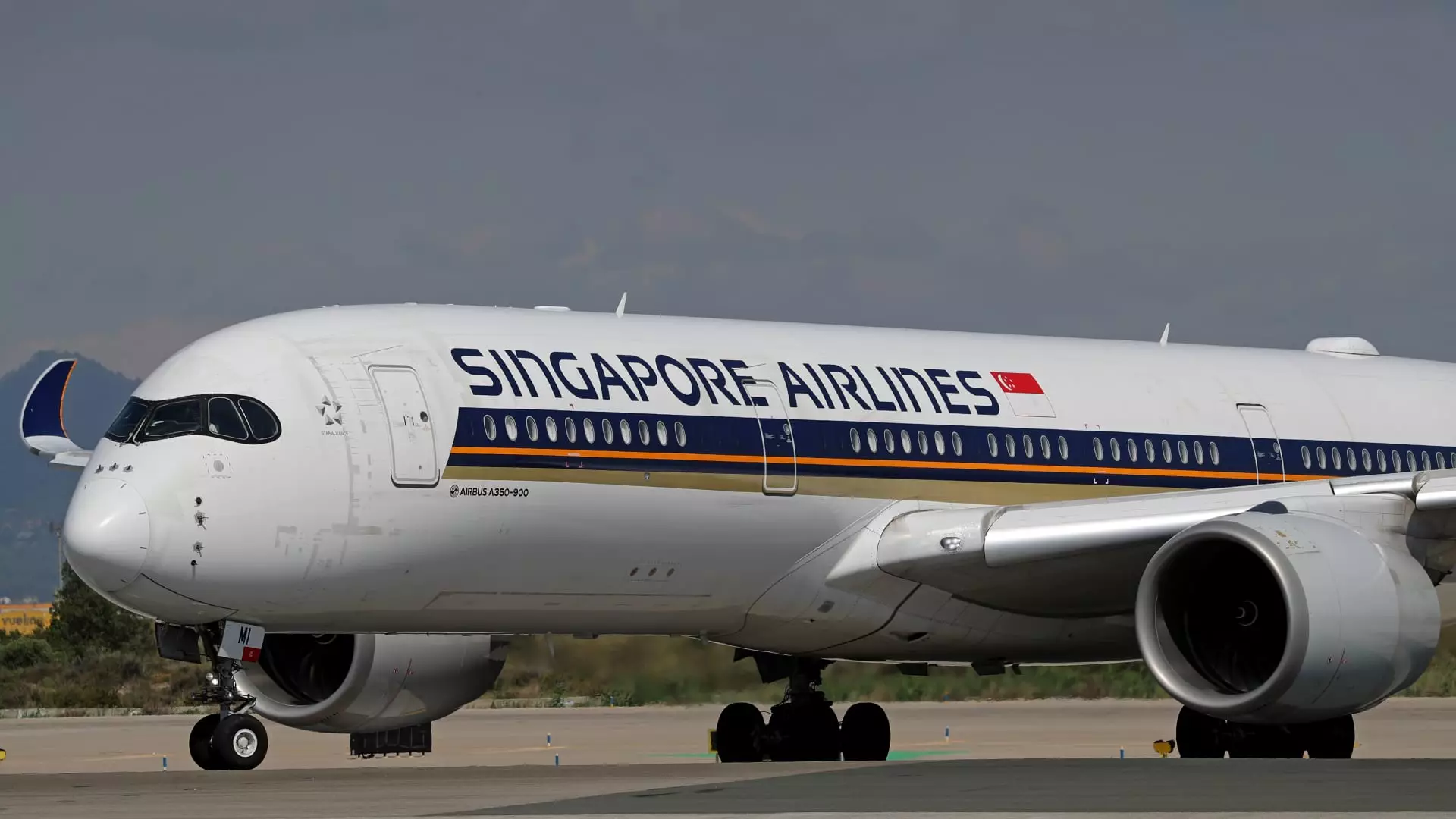Singapore Airlines (SIA) has recently encountered significant challenges, leading to a steep decline in its net profit for the first half of the fiscal year. The airline reported a staggering 48.5% drop in net profit, amounting to 742 million Singapore dollars (approximately 559.12 million USD), a stark contrast to the previous year’s figure of 1.44 billion Singapore dollars. This downturn prompted an immediate response in the stock market, with shares plummeting by as much as 6.2% upon opening before settling at a 3.57% decline. This reaction underscores how sensitive investors are to the airline’s financial performance, particularly in a recovering sector.
One intriguing aspect of SIA’s financial report is the paradox of rising revenues coupled with dwindling profits. Revenue increased by 3.7% to reach 9.5 billion Singapore dollars. However, the operating profit saw a dramatic decline of 48.8%, plunging to 796 million Singapore dollars from 1.55 billion the previous year. This scenario raises questions about the sustainability of fares amid intensified competition and surplus capacity within the airline industry. The company’s Chief Commercial Officer, Lee Lik Hsin, highlighted that the heightened competition is a significant contributor to lower yields, indicating a struggle to maintain pricing power in a fiercely competitive marketplace.
Despite reporting an increase in passenger traffic of 7.9% year-on-year, SIA’s ability to capitalize on this growth was undermined by an even more substantial passenger capacity expansion of 11%. Consequently, the airline’s passenger load factor—a critical metric reflecting the efficiency and profitability of its operations—decreased by 2.4 percentage points to 86.4%. This drop signals that while traveler numbers are growing, SIA is unable to fill its planes to the extent anticipated, raising further concerns about profitability moving forward.
In light of these challenges, Singapore Airlines remains resolute in its commitment to expanding capacity despite the current competitive environment. Lee indicated that the airline would not restrain its growth strategies on account of heightened competition, showing a belief in continued demand for air travel. Looking to the future, SIA recently announced a substantial investment of 1.1 billion SGD into a cabin retrofit program aimed at enhancing its fleet of A350 jets. This initiative, which will see the first retrofitted aircraft take to the skies by 2026 and complete by 2030, aims to improve customer experience and operational efficiency.
As we move deeper into the fiscal year, the outlook for Singapore Airlines remains a mixed bag. While the demand for air travel is anticipated to remain robust, the airline must navigate a landscape that is likely to continue posing competitive pressures. The ability to adapt to these challenges and sustain profitability will be critical. For stakeholders, keeping a close eye on SIA’s strategic decisions and market fluctuations will be essential in understanding the airline’s turnaround potential as it strives to reclaim its position in the market.

